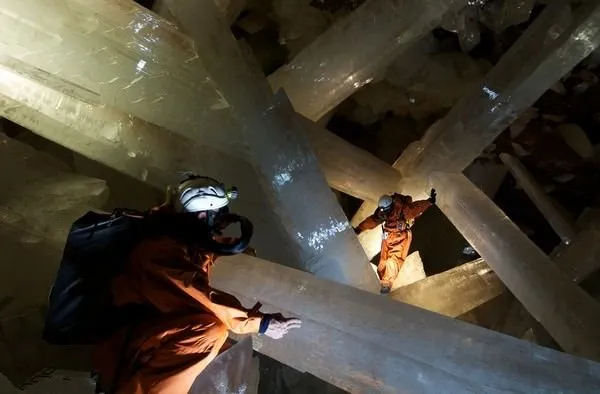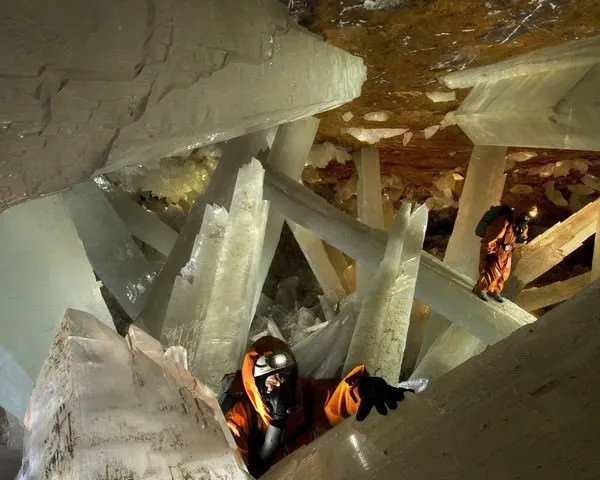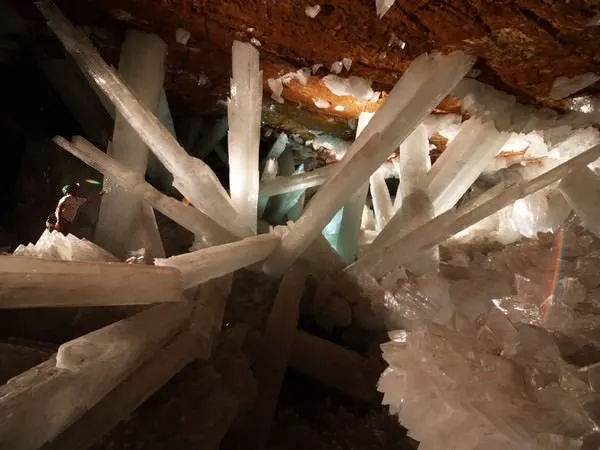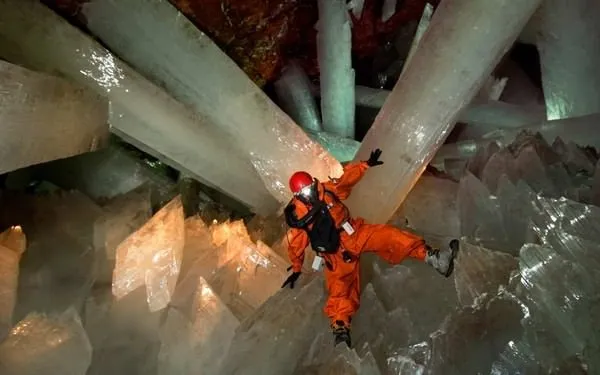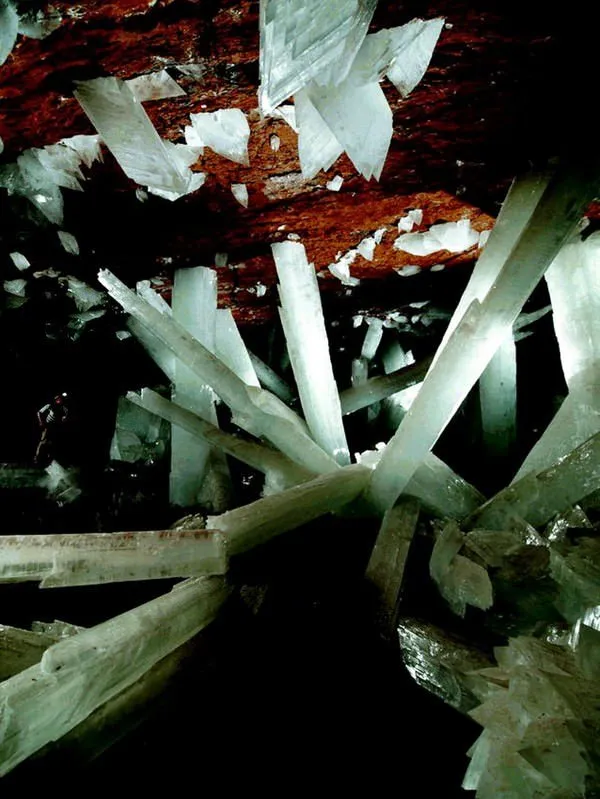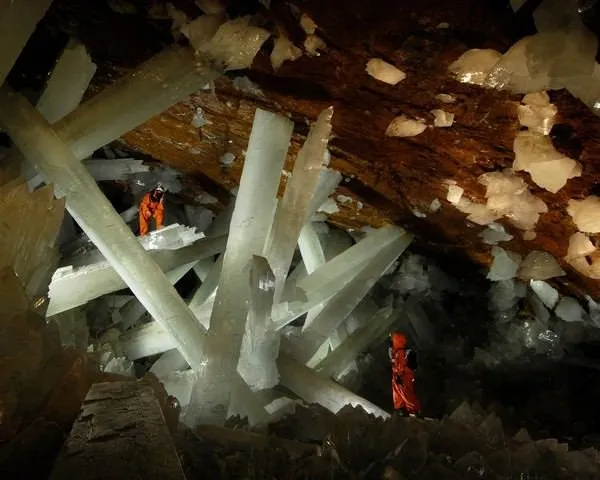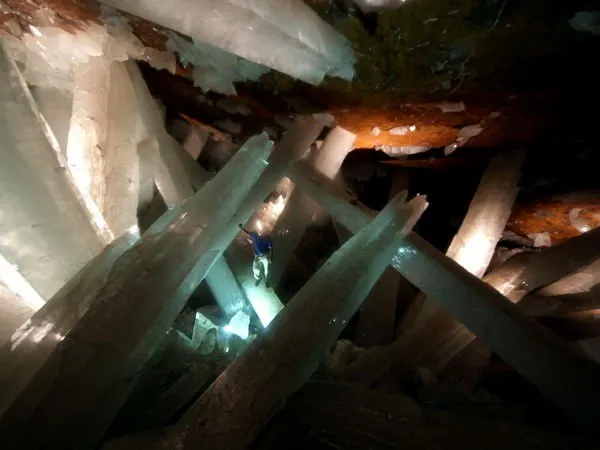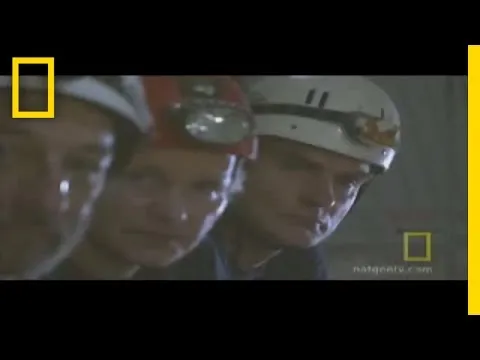Long time followers will be no stranger to my fascination with all things subterranean. Just recently I wrote an article about an underground health spa and resort in Poland. But the underground oddity I am bringing to your attention this time is not manmade.
Rather it's a naturally occurring anomaly. A massive cave network housing equally massive selenite crystals. These are not the quartz you're probably familiar with, hence they are not transparent, but are no less majestic for it. You can get some sense of scale from the humans in the photo; these crystals are huge.
They're located in a branch of the Naica mine, in Naica, Chihuaha, Mexico. A bit of a mouthful but as you might expect it's a gypsum mine, one of the main constituent elements in the selenite that the crystals are comprised of.
Based on the outfits the cavers are wearing, you could be forgiven for assuming the caverns are especially cold. But the opposite is true! Most sections of the cave network are sweltering, much too hot for humans to survive in for any length of time without special cooling suits, which is what those figures are wearing.
Other sections are still humid and hot, but tolerable with scant clothing, as seen above. But for explorers to penetrate really deep into the furthest extents of the network, they need both special gear, and support infrastructure such as an air conditioned shelter they call the "ice cube".
Isn't that an odd concept? As someone fascinated by hostile environment habitats, this is a really exotic application. Usually you think of man made habitats being used undersea or in space. Places with no air to breathe, and with pressure differentials. Here, the habitat simply keeps cold air in and warm air out. But it takes a constant influx of energy to maintain that temperature difference.
By sending cavers in cooling suits to run electrical cord further into the cave, they can establish shelters further and further in. Safe havens where they can take off their cumbersome gear, eat some food, sleep, use the bathroom and so on.
The crystal chambers were discovered by the brothers Eloy and Javier Delgado. The largest single crystal found in the caves so far is 12 meters, or 39 ft, in length. It's 4 meters, or 13 ft in diameter, and weighs 55 tons. Temperatures in the crystal caverns get up to 58 °C/136 °F, and 90 to 99% humidity.
The uniquely large crystals were thought to have formed as a result of the unusual confluence of conditions in the cavern. There's a fault in the cavern floor just above a magma chamber, 2 to 3 miles beneath the cave. The magma heated the ground water, which was saturated with sulfide ions.
Cool water from the surface, upon contact with the heated, sulfide saturated ground water caused a chemical reaction that oxidized the sulfides into sulfates. This created the conditions for the slow formation of giant selenite crystals over 500,000 years or so.
You can see everything I've discussed in this article, including the convoluted system of infrastructure and gear used for human exploration of the crystal caves, in the documentary above. I meant to watch just a minute or two but it sucked me in, and the next thing I knew it was over. I still wanted to know more!
That's all for this time, however. I am also in the habit of always leaving my readers wanting more. Stay tuned for subsequent pieces on the underground, undersea and antarctic oddities hiding right here on planet Earth.
Stay Cozy!
